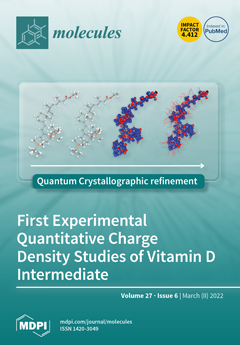In recent years, conjugated microporous polymers (CMPs) have become important precursors for environmental and energy applications, compared with inorganic electrode materials, due to their ease of preparation, facile charge storage process, π-conjugated structures, relatively high thermal and chemical stability, abundance in nature, and
[...] Read more.
In recent years, conjugated microporous polymers (CMPs) have become important precursors for environmental and energy applications, compared with inorganic electrode materials, due to their ease of preparation, facile charge storage process, π-conjugated structures, relatively high thermal and chemical stability, abundance in nature, and high surface areas. Therefore, in this study, we designed and prepared new benzobisthiadiazole (BBT)-linked CMPs (BBT–CMPs) using a simple Sonogashira couplings reaction by reaction of 4,8-dibromobenzo(1,2-c;4,5-c′)bis(1,2,5)thiadiazole (BBT–Br
2) with ethynyl derivatives of triphenylamine (TPA-T), pyrene (Py-T), and tetraphenylethene (TPE-T), respectively, to afford TPA–BBT–CMP, Py–BBT–CMP, and TPE–BBT–CMP. The chemical structure and properties of BBT–CMPs such as surface areas, pore size, surface morphologies, and thermal stability using different measurements were discussed in detail. Among the studied BBT–CMPs, we revealed that TPE–BBT–CMP displayed high degradation temperature, up to 340 °C, with high char yield and regular, aggregated sphere based on thermogravimetric analysis (TGA) and scanning electron microscopy (SEM), respectively. Furthermore, the Py–BBT–CMP as organic electrode showed an outstanding specific capacitance of 228 F g
−1 and superior capacitance stability of 93.2% (over 2000 cycles). Based on theoretical results, an important role of BBT–CMPs, due to their electronic structure, was revealed to be enhancing the charge storage. Furthermore, all three CMP polymers featured a high conjugation system, leading to improved electron conduction and small bandgaps.
Full article






